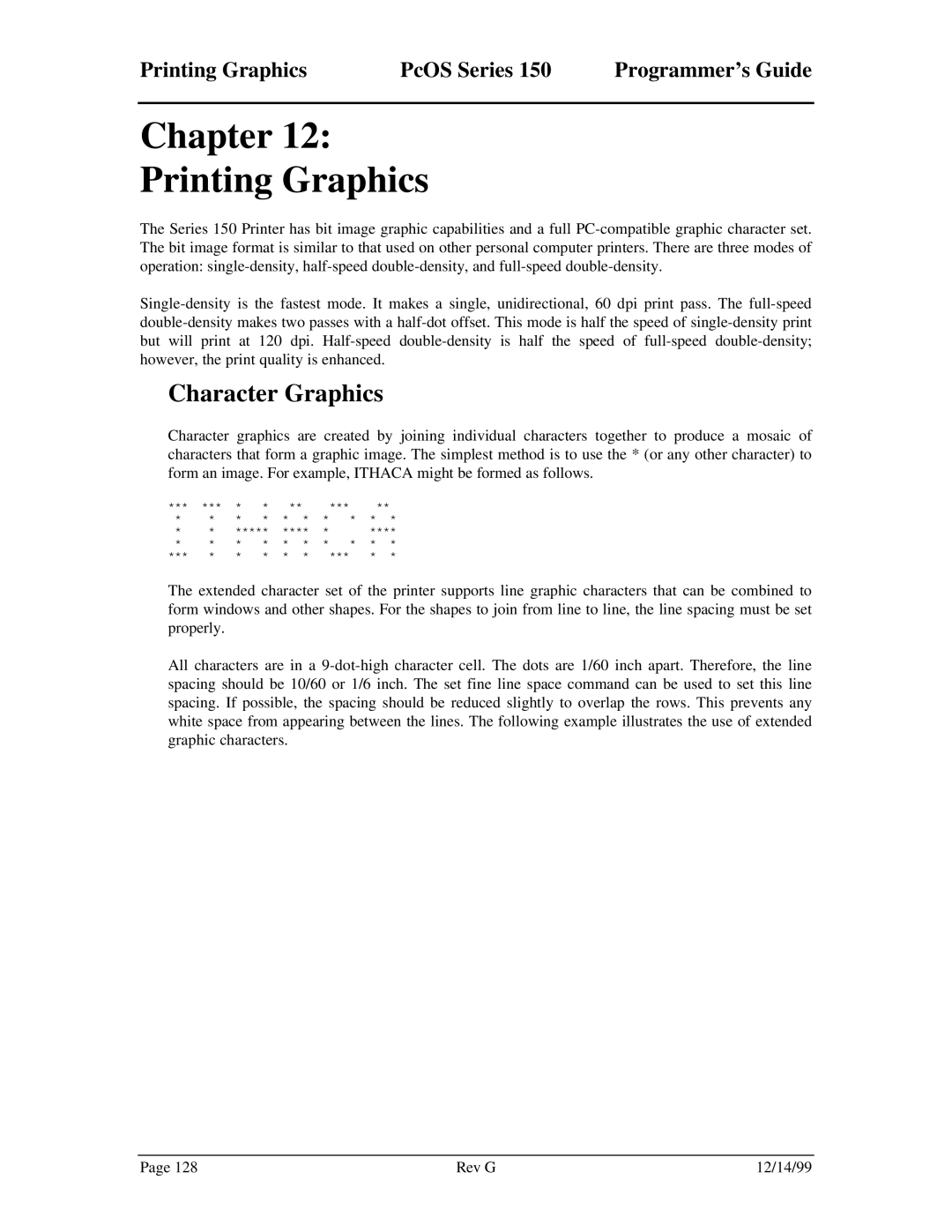
Printing Graphics | PcOS Series 150 | Programmer’s Guide |
Chapter 12:
Printing Graphics
The Series 150 Printer has bit image graphic capabilities and a full PC-compatible graphic character set. The bit image format is similar to that used on other personal computer printers. There are three modes of operation: single-density, half-speed double-density, and full-speed double-density.
Single-density is the fastest mode. It makes a single, unidirectional, 60 dpi print pass. The full-speed double-density makes two passes with a half-dot offset. This mode is half the speed of single-density print but will print at 120 dpi. Half-speed double-density is half the speed of full-speed double-density; however, the print quality is enhanced.
Character Graphics
Character graphics are created by joining individual characters together to produce a mosaic of characters that form a graphic image. The simplest method is to use the * (or any other character) to form an image. For example, ITHACA might be formed as follows.
*** | *** | * | * | | ** | *** | | | ** |
* | * | * | * | * | * | * | * | * | * |
* | * | ***** | **** | * | | **** |
* | * | * | * | * | * | * | * | * | * |
*** | * | * | * | * | * | *** | | * | * |
The extended character set of the printer supports line graphic characters that can be combined to form windows and other shapes. For the shapes to join from line to line, the line spacing must be set properly.
All characters are in a 9-dot-high character cell. The dots are 1/60 inch apart. Therefore, the line spacing should be 10/60 or 1/6 inch. The set fine line space command can be used to set this line spacing. If possible, the spacing should be reduced slightly to overlap the rows. This prevents any white space from appearing between the lines. The following example illustrates the use of extended graphic characters.

